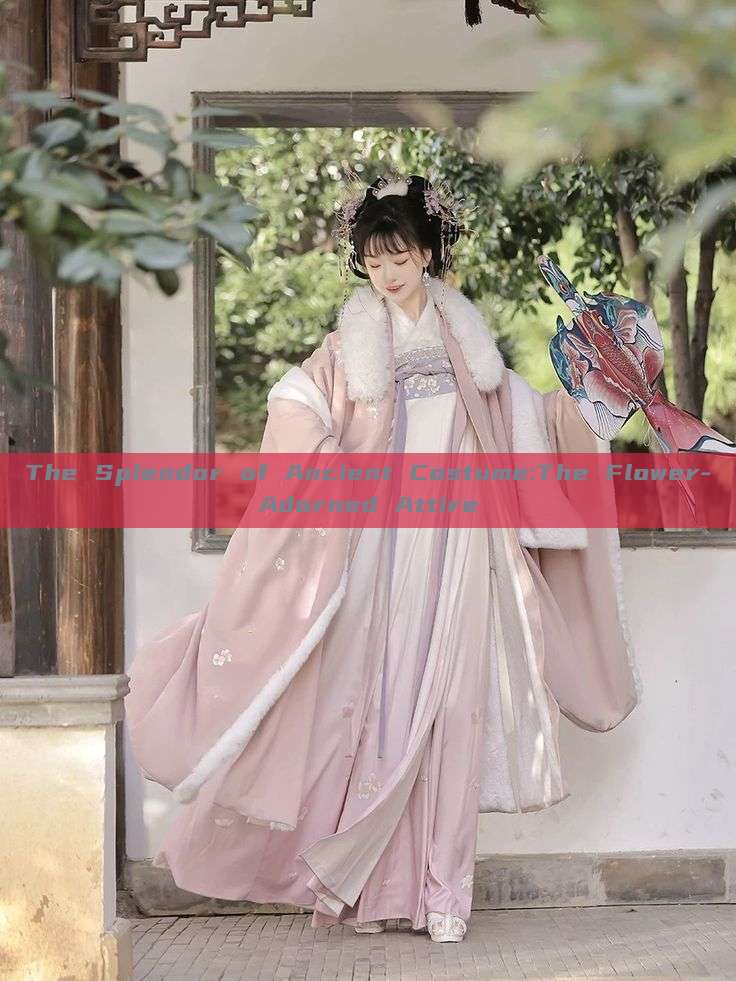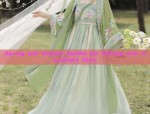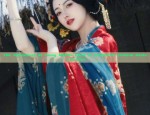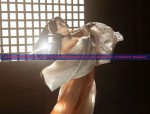The Splendor of Ancient Costume:The Flower-Adorned Attire
In The realm of ancient history, the art of costume design was a flourishing expression of culture, tradition, and societal status. Among the intricate details and vibrant hues, the element of floral embellishments stood out as a symbol of beauty and grace, reflecting a deep connection to nature and its cycles. This article delves into the enchanting world of ancient costume adorned with floral designs, examining their historical significance and the craftsmanship behind these beautiful creations.

The art of floral embellishments on ancient costumes can be traced back to ancient civilizations such as Egypt, Greece, and China. In these cultures, flowers were highly regarded as symbols of beauty, love, and fertility. They were often used to decorate clothing as a form of artistic expression and to show social status. The intricate patterns and designs created by skilled craftsman were not just decorative; they carried deep cultural and symbolic meanings.
In China, for instance, the use of flowers in costume design was particularly significant. The intricate dragon and phoenix patterns often found on traditional Chinese costumes were not just symbols of power and nobility; they also represented the union between heaven and earth, symbolizing harmony and balance. The use of flowers in these designs added a touch of elegance and beauty, creating a visual feast for the eyes.
The craftsmanship behind these floral designs was remarkable. Using techniques such as embroidery, beading, and weaving, skilled artisans created stunning patterns that were both visually appealing and highly symbolic. The use of different materials such as silk, cotton, and precious metals added to the beauty and durability of these costumes. The intricate details and vibrant colors were often a result of months or even years of hard work and dedication.
As time passed, the art of floral embellishments on costumes evolved with changing fashion trends and cultural influences. Different regions and cultures began to influence each other, leading to a fusion of styles and techniques. For instance, the use of floral designs in Indian costumes was influenced by the Mughal Empire's art style, which combined elements of Persian and Central Asian designs with traditional Indian motifs. This fusion created stunning costumes that were both traditional and modern, reflecting a blend of cultures.
The use of floral designs on ancient costumes also had a profound impact on modern fashion. Many modern designers often turn to ancient costume designs for inspiration, incorporating floral motifs into their modern designs. These designs are not just a nod to the past; they also reflect a deep respect for nature and its beauty. The use of eco-friendly materials and sustainable techniques in modern fashion has also led to a revival of interest in ancient floral designs.
In conclusion, the art of floral embellishments on ancient costumes is not just a reflection of beauty and fashion; it is a representation of deep cultural values and traditions. The intricate details and vibrant hues create a visual feast for the eyes, while the symbolism behind these designs offers a deeper understanding of ancient cultures and their values. The influence of these ancient designs on modern fashion is evident, showing that the beauty and craftsmanship of these costumes will continue to inspire future generations.
The study of ancient costume adorned with floral designs is not just about fashion; it is also about understanding the deep connection between humans and nature. It is about respecting our cultural heritage and passing it down to future generations. As we move forward in time, let us not forget the beauty and craftsmanship that has been passed down through the ages but continue to evolve and inspire us today.

 Previous Post
Previous Post








